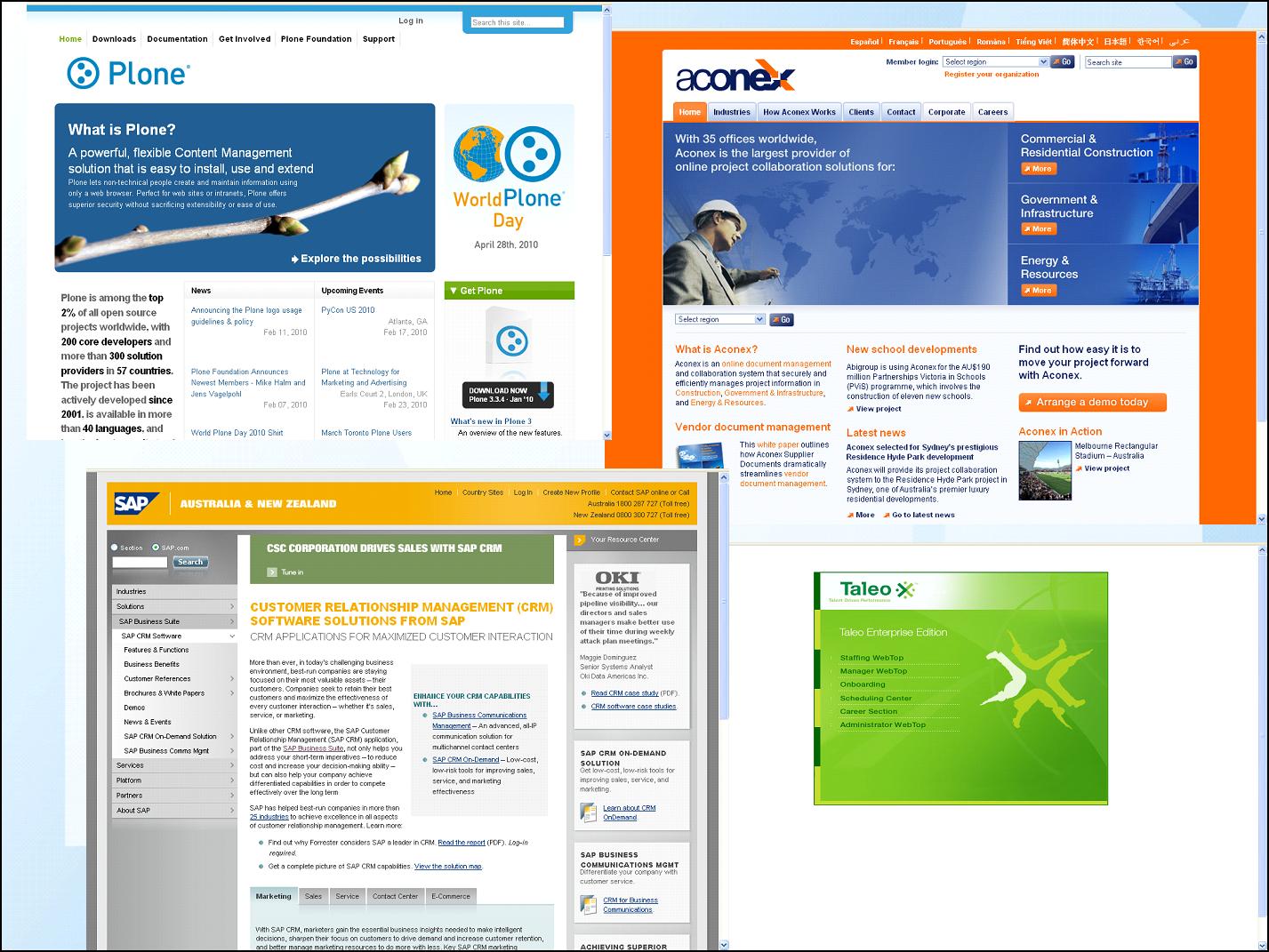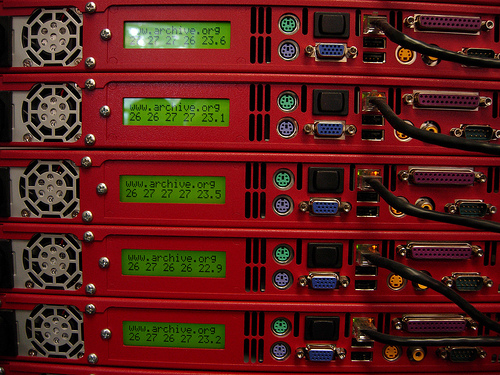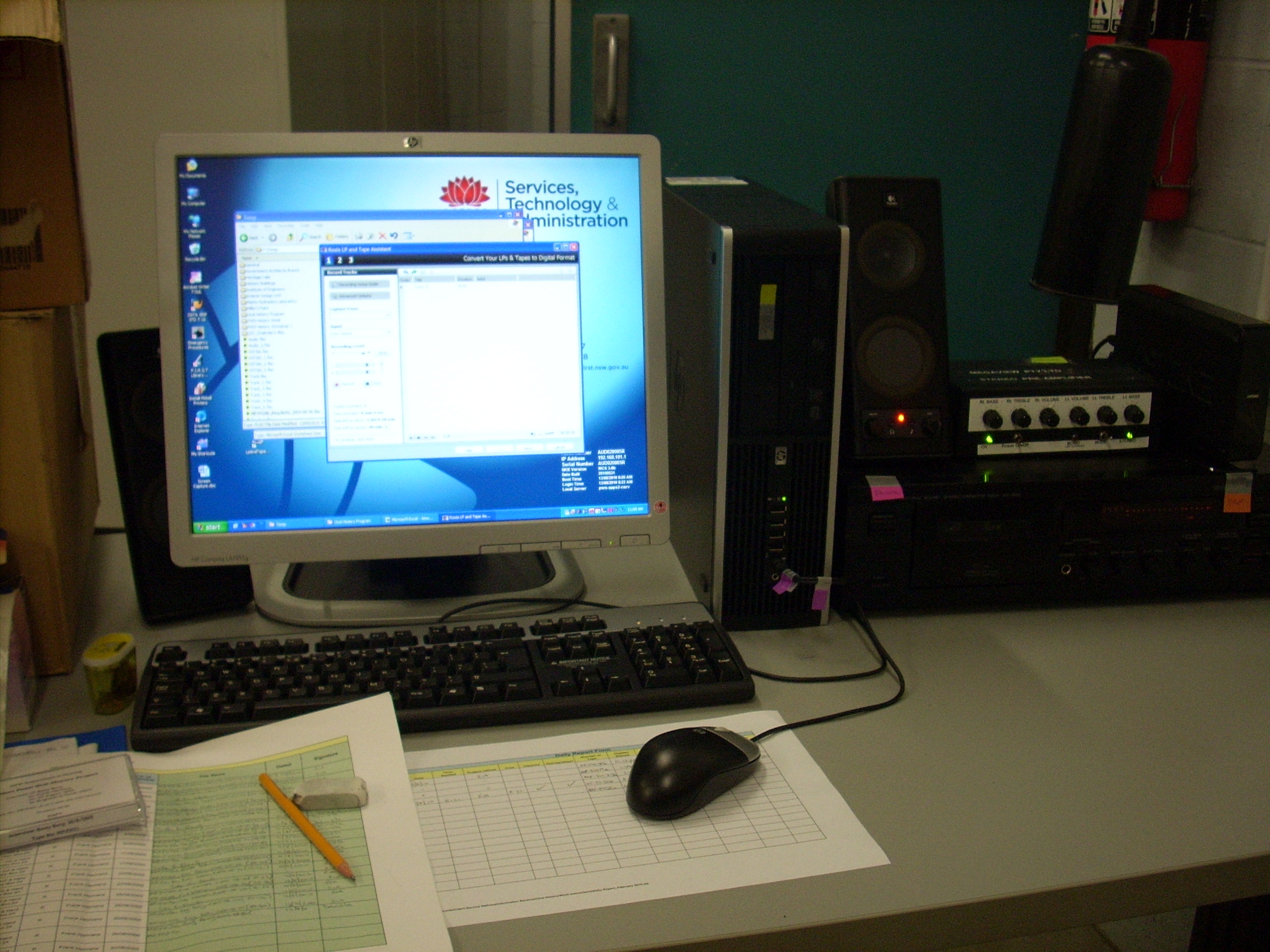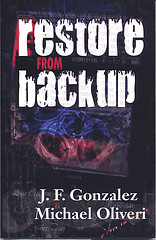Public Works oral history recordings go digital November 8, 2010 1 Comment
Cassie and I were invited to visit the Department of Services Technology and Administration (DSTA) recently to see their audio digitisation project. The Records Project Team were in the process of converting around 550 audio tapes to digital format.
Future Proof attends ‘Future Proof’ conference October 25, 2010 No Comments
Future proofers Cassie, Kate and Richard recently attended the 2010 Australian Society of Archivists conference which had the theme ‘Future Proof: Resilient Archives 2020 and Beyond’ (no relation!). Melbourne’s mixed weather didn’t dampen a great program, highlights of which follow…
How might a NSW Digital Archive look in 2020? October 8, 2010 No Comments
At a risk of being judged by posterity to have been either unrealistically overambitious, or quaintly conservative, here is my vision for how a NSW Digital Archive might look a decade from now:
An agency imports its new XML retention and disposal authority into its corporate records system. Triggers and retention periods are automatically calculated. Years later the corporate records system autonomously negotiates with SRNSW’s digital archive to perform an online records transfer. Proposed disposal classes are matched against current authorisation by the digital archive. The records are transferred using CMIS, a standard protocol for content transfer. The digital archive automatically ingests the transfer and converts records to normalised formats for preservation. Recordkeeping metadata is also transferred by the agency and is used to create archival descriptions in traditional and in linked data formats. On receipt of a confirmation of transfer, the agency replaces its copies of the digital records with pointers to the normalised records now maintained by SRNSW.
Within the corporate records system, an agency user accesses a file that has been transferred to SRNSW and opens it as seamlessly as any record held locally. At the same time, an external researcher writing a paper on NSW history is prompted by their editing and research tool to examine one of the digital records transferred by the agency. Behind the scenes their editing tool had been conducting semantic internet queries using the contents of their paper and discovered the relevant item in the linked data archival description published by SRNSW.
What is your vision for a future NSW digital archive?
Backup vendor advocates digital disposal September 8, 2010 No Comments
Software vendor Symantec recently reported on the results of its 2010 Information Management Health Check Survey. A key finding of the survey is that backup systems are being misused as indefinite storage for digital records.
Symantec estimates that seventy-five percent of backup storage comprises material that is being retained ‘infinitely’ or is subject to a legal hold.
This misuse of backup systems drives up costs and lengthens backup windows. As a solution for legal discovery, backup storage is inefficient because accessing material on backup tapes is cumbersome and slow, making e-discovery a very costly exercise.
[I]t’s the fear of deleting important records that keeps enterprises from moving away from the outdated strategy of simply keeping everything forever.
To address this problem, Symantec stresses the importance of an ‘information management plan’ (something acknowledged as important by nearly ninety percent of respondents to the survey, but implemented by less than half), the creation of formal retention policies, the routine deletion of digital records according to those policies, and to stop using backup for ‘archiving and legal holds’.
State Records NSW requires that digital State records are captured into recordkeeping systems. Backup systems should not be used for this purpose (see section 2.3 of Managing Digital Records (Guideline 22) for reasons why). For guidance on the appropriate destruction of digital records, see section 1.6 of Managing Digital Records.
More information about Symantec’s survey is available at: http://www.symantec.com/connect/blogs/symantec-survey-finds-infinite-data-retention-leading-costly-backup-and-archiving-mistakes.
Clouds clear for computing risks August 9, 2010 No Comments
Today the Australasian Digital Recordkeeping Initiative (ADRI) issued a media release regarding a new statement on managing the recordkeeping risks associated with the adoption of cloud computing solutions. State Records is a member of ADRI and was the lead agency on the development of this statement. Read the rest of this entry »
What do ICT professionals think about digital recordkeeping? 5 minute survey July 23, 2010 1 Comment
Attention ICT professionals! Are you aware that, in an average government organisation, over 30% of the digital information generated needs to be kept in an accessible and useable form for more than 10 years, and approximately 10% of the digital information needs to be kept accessible and useable indefinitely? What strategies does your organisation have in place for preserving digital information? And what about the massive explosion of digital information in network drives and email inboxes? How can you safely and lawfully delete it?
STOP PRESS: Survey closing cob Friday August 20, 2010
Digital recordkeeping success depends on a team effort. Often, that team requires the input of ICT professionals – whether in programming, enterprise architecture, systems implementation, technical support, website management or another area of ICT. 
Read the rest of this entry »
Shared drives full of weirdly named documents? July 12, 2010 No Comments
Guest post by Stephen Bedford, Department of Services Technology and Administration
DSTA have developed MS Office templates for common business formats (such as memos, faxes etc) which automatically captures a sensible file save as name based on document content. It takes information from bookmarked fields, processes it, and suggests a filename, and also saves metadata in to the document properties.
The templates are available for anyone in NSW Government to use, and can be downloaded from the IAMSAsk website if you have a log in (and if you don’t, you can get one from peter.clare@services.nsw.gov.au).
The templates come with instructions on how they can be modified to suit your organisation.
New workshop on assessing business systems for recordkeeping risk June 18, 2010 No Comments
 We know from speaking with many different public offices that addressing the recordkeeping risks associated with business systems is a major challenge for the NSW government. That is why we have developed a half day workshop called ‘Managing recordkeeping risk in business systems’. Read the rest of this entry »
We know from speaking with many different public offices that addressing the recordkeeping risks associated with business systems is a major challenge for the NSW government. That is why we have developed a half day workshop called ‘Managing recordkeeping risk in business systems’. Read the rest of this entry »
Happy International (digital) Archives Day! June 9, 2010 No Comments
 June 9 is International Archives Day. Established by the International Council on Archives as a way to draw attention to the importance of archives and recordkeeping in society, International Archives Day is being marked today by National, State and other archival institutions all over the world.
June 9 is International Archives Day. Established by the International Council on Archives as a way to draw attention to the importance of archives and recordkeeping in society, International Archives Day is being marked today by National, State and other archival institutions all over the world.
Read the rest of this entry »
Achieving digital continuity June 4, 2010 No Comments
The National Archives (TNA) of the United Kingdom have defined digital continuity as: “establishing an ability to access and use digital information for as long as organisations need to, over however long the timescales are required, and through organisational, business and technology changes.” TNA also makes the point with this definition that: “It (digital continuity) is more than preservation as it necessitates a wide range of good information management policies and practices.”
Read the rest of this entry »





